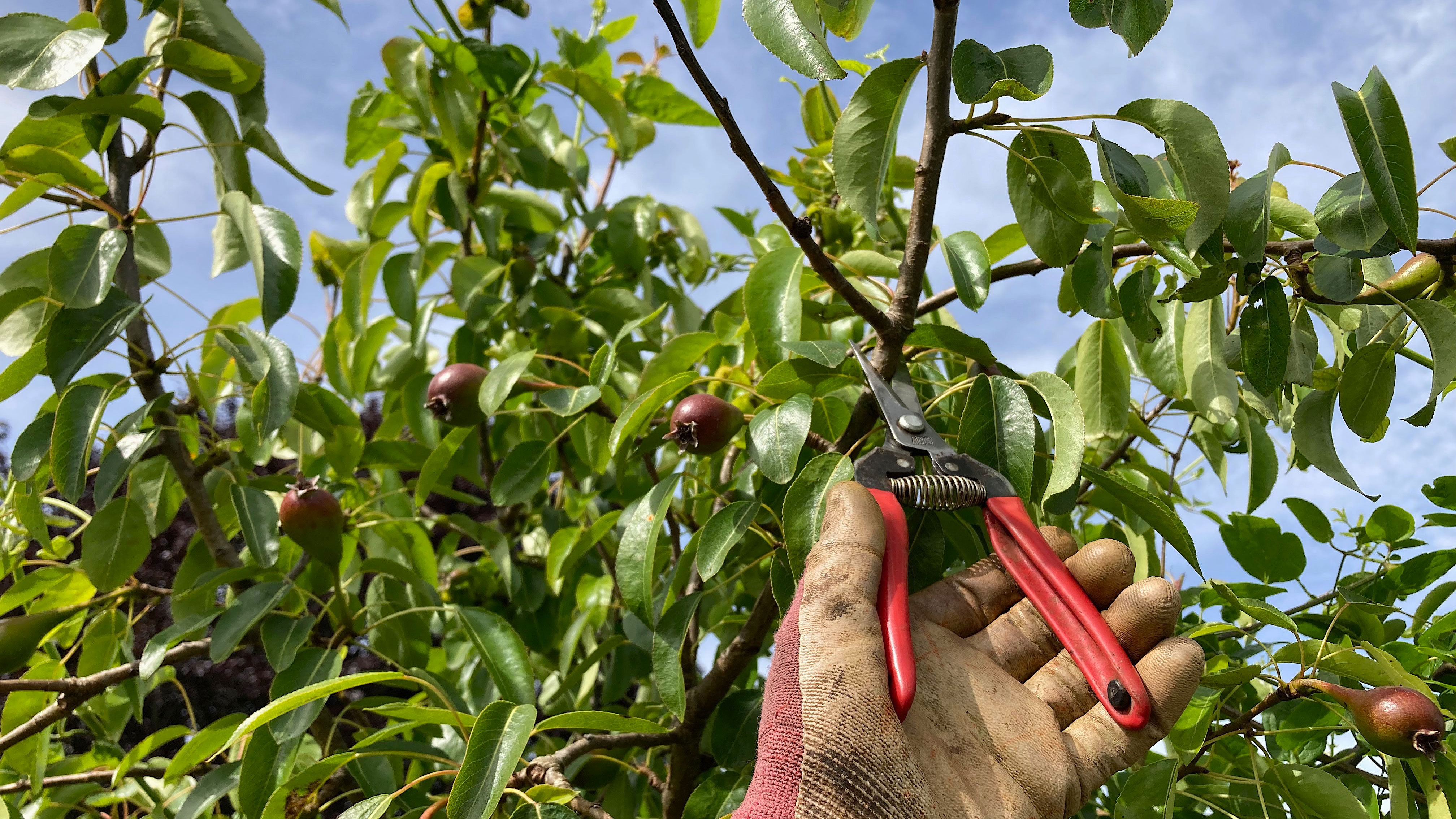How to Prune Fruit Trees for Better Yield: A Comprehensive Guide

Imagine walking through your orchard, the sun warming your face, and the scent of ripe fruit filling the air. You reach out to pluck a perfectly formed apple, its skin glistening with dew. This idyllic scene is within reach, but it starts with understanding how to prune fruit trees for better yield. Pruning is not just about cutting branches; it's about shaping the future of your trees and maximizing their productivity. Let's dive into the art and science of pruning to help you achieve that bountiful harvest you've always dreamed of.
Understanding the Basics of Pruning
Pruning is a crucial aspect of fruit tree maintenance. It involves the selective removal of branches to control growth, improve structure, and increase yield. Think of it as giving your tree a haircut—it's not just about aesthetics but also about promoting healthy growth and productivity.
Why Prune Fruit Trees?
Pruning serves several purposes:
- Improves Fruit Quality: By reducing the number of branches, you allow the tree to focus its energy on producing fewer but higher-quality fruits.
- Enhances Light Penetration: Proper pruning allows sunlight to reach the inner branches, promoting better fruit development and ripening.
- Encourages Air Circulation: Good airflow helps prevent diseases and pests from taking hold.
- Controls Tree Size: Regular pruning keeps your tree at a manageable size, making harvesting easier.
Pruning Techniques for Better Yield
When to Prune
Timing is everything when it comes to pruning. The best time to prune most fruit trees is during the dormant season, typically late winter or early spring. This is when the tree is least active and less likely to be stressed by the pruning process.
Tools You'll Need
Before you start, make sure you have the right tools:
- Pruning Shears: For small branches.
- Loppers: For larger branches.
- Pruning Saw: For thick branches.
- Gloves: To protect your hands.
Basic Pruning Steps
1. Remove Dead or Diseased Branches
Start by removing any dead, diseased, or damaged branches. These can harbor pests and diseases, so it's important to get rid of them.
2. Cut Back Crossing Branches
Branches that cross or rub against each other can cause damage and create entry points for diseases. Remove one of the crossing branches to prevent this.
3. Open Up the Canopy
Aim for a balanced, open structure. Remove any branches that are growing inward or downward, as they can shade other branches and reduce fruit production.
4. Encourage New Growth
Make cuts just above a bud or a side branch. This encourages the tree to produce new growth in the desired direction.
Advanced Pruning Techniques
Heading Cuts vs. Thinning Cuts
- Heading Cuts: These involve cutting back a branch to a bud or a side branch. This stimulates new growth and is useful for shaping the tree.
- Thinning Cuts: These involve removing an entire branch back to its point of origin. This helps to open up the canopy and improve light penetration.
Espalier Training
Espalier is a technique where branches are trained to grow flat against a wall or trellis. This is particularly useful for small gardens, as it allows you to grow fruit trees in a limited space.
Summer Pruning
While most pruning is done in the dormant season, some trees benefit from summer pruning. This involves removing new growth to control the size and shape of the tree.
Common Mistakes to Avoid
Over-Pruning
It's easy to get carried away and remove too many branches. Over-pruning can stress the tree and reduce its ability to produce fruit.
Under-Pruning
On the other hand, not pruning enough can lead to a dense canopy that blocks light and air, increasing the risk of diseases.
Improper Cuts
Make sure your cuts are clean and at the right angle. Improper cuts can damage the tree and make it more susceptible to diseases.
Conclusion
Pruning fruit trees for better yield is an art that combines science and intuition. By understanding the basics of pruning techniques and avoiding common mistakes, you can significantly improve the health and productivity of your fruit trees. Remember, pruning is not a one-time task but an ongoing process that requires patience and practice.
So, are you ready to transform your orchard into a thriving, fruitful haven? Grab your pruning shears and let's get started!
FAQs
1. What is the best time to prune fruit trees?
The best time to prune most fruit trees is during the dormant season, typically late winter or early spring. This is when the tree is least active and less likely to be stressed by the pruning process.
2. How often should I prune my fruit trees?
Fruit trees should be pruned annually to maintain their shape and productivity. Regular pruning helps control growth, improve structure, and increase yield.
3. What tools do I need for pruning fruit trees?
You'll need pruning shears for small branches, loppers for larger branches, a pruning saw for thick branches, and gloves to protect your hands.
4. What is the difference between heading cuts and thinning cuts?
Heading cuts involve cutting back a branch to a bud or a side branch, stimulating new growth and shaping the tree. Thinning cuts involve removing an entire branch back to its point of origin, opening up the canopy and improving light penetration.
5. Can I prune fruit trees in the summer?
While most pruning is done in the dormant season, some trees benefit from summer pruning. This involves removing new growth to control the size and shape of the tree. However, it's important to understand the specific needs of your tree before attempting summer pruning.


For more detailed information on pruning techniques, you can refer to the University of California's guide on pruning fruit trees. This resource provides additional insights and practical tips to help you achieve the best results.
0 Response to "How to Prune Fruit Trees for Better Yield: A Comprehensive Guide"
Post a Comment